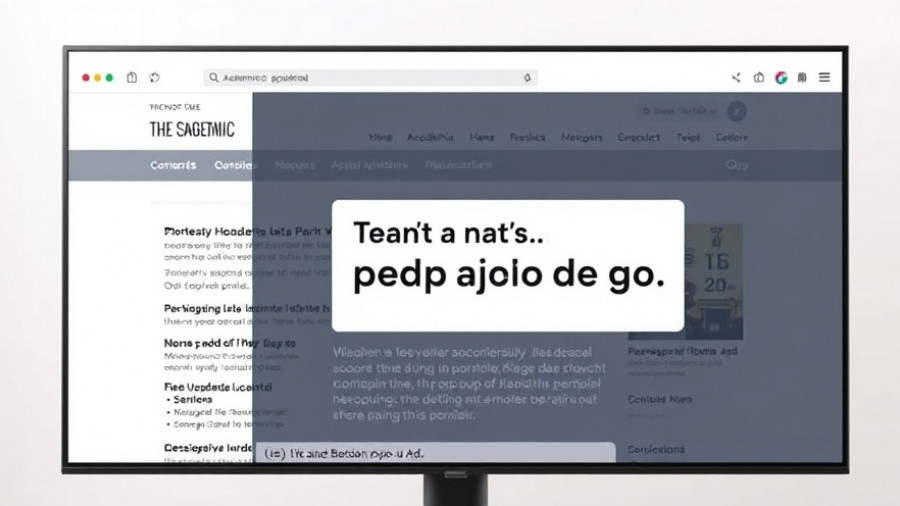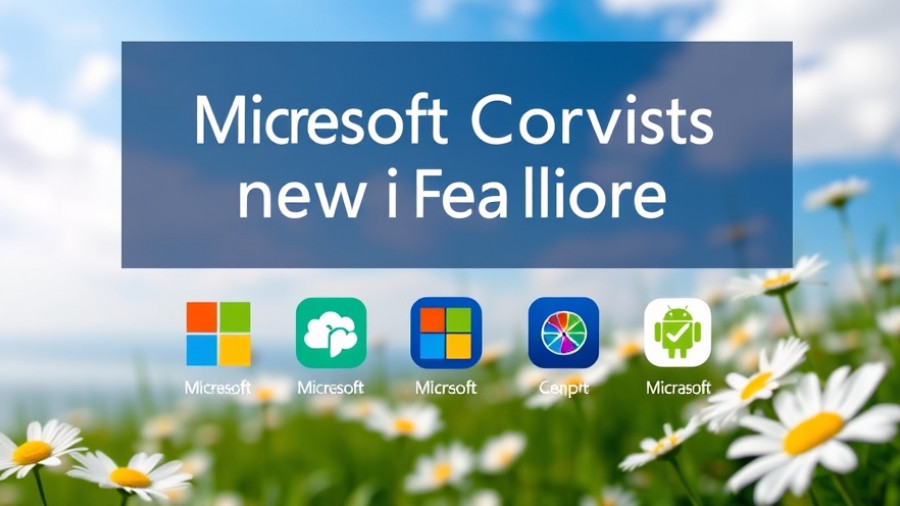
Microsoft's Bold Move Towards AI Independence
Microsoft Corp. has made a significant shift in its approach to artificial intelligence by launching two in-house models: MAI-Voice-1, aimed at high-quality speech generation, and MAI-1, a foundational model designed for a broader range of applications. This strategic move highlights the company’s goal to reduce its dependence on external partners, particularly OpenAI, amidst reported tensions regarding intellectual property and revenue sharing.
Revolutionizing AI Development Amid Collaboration Tensions
Despite having invested over $10 billion in OpenAI, Microsoft has now decided to diversify its AI capabilities by investing in the development of these internal models. The MAI-1 model, boasting around 500 billion parameters, positions itself as a direct competitor to OpenAI’s popular offerings, such as the GPT-4. This competitive edge reflects Microsoft's ambitious plans to enhance its AI-driven products, like the Copilot AI assistant, which integrates seamlessly into platforms such as Bing and Windows.
Technological Innovations Driving Microsoft’s AI
MAI-Voice-1 is particularly noteworthy for its efficiency in audio processing—it is trained with a comparatively modest 100,000 hours of data, unlike the larger datasets typically used by competitors. This could allow Microsoft to lower deployment costs and accelerate the rollout of new features, making AI tools more accessible to both consumers and businesses. Furthermore, initial reports suggest that the MAI-1 model will expand into multimodal applications, offering potential advancements in fields like image and video processing.
The Landscape of Competition: Microsoft vs. Rivals
This development marks a pivotal moment in the AI landscape, intensifying competition with industry players not just among OpenAI, but also against major companies like Google and Anthropic. Analysts suggest that by establishing its own AI foundations, Microsoft is not only mitigating the risks associated with third-party dependencies but also steering towards a future rich with innovation and enhanced user experiences.
Exploring Future AI Trends and Opportunities
As Microsoft continues to forge its path in AI development, industry observers are keeping a close watch on how these models will reshape the existing dynamics between AI providers. The dual focus on maintaining a relationship with OpenAI while developing independent capabilities indicates a trend towards hybrid strategies in the tech landscape. This could foster a new era of innovation where established players seek to balance cooperation and competition.
Expert Insights on Microsoft’s AI Path
Current insights from industry experts reveal a mixed bag of opinions regarding Microsoft's approach. While some emphasize the potential for enhanced innovation and cost efficiency through internal capabilities, others raise concerns about the implications of fragmenting AI development across several platforms. This raises important questions about standardization, user experience, and the overall evolution of AI technology in the coming years.
Conclusion: Embracing Change in AI Development
Microsoft’s proactive shift towards in-house AI models underscores the importance of self-sufficiency in an evolving technological landscape. As the company navigates its partnerships and develops its capabilities, consumers and businesses alike stand to benefit from the enhancements in AI applications. Observers remain eager to see how this bold direction will unfold and what it will mean for the future of artificial intelligence.
 Add Row
Add Row  Add
Add 




Write A Comment